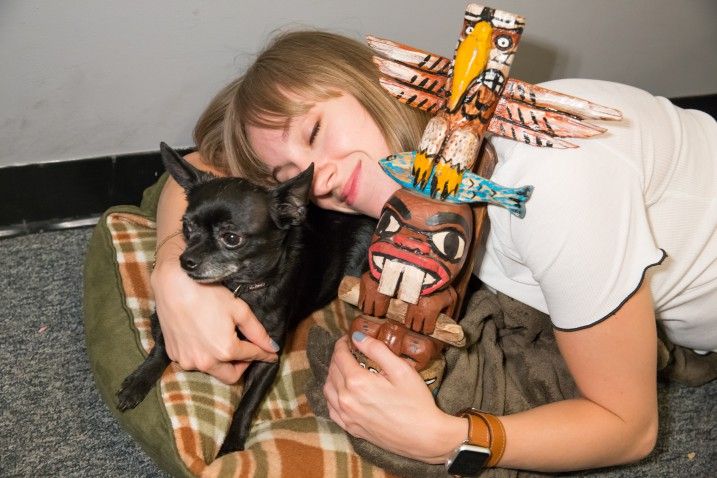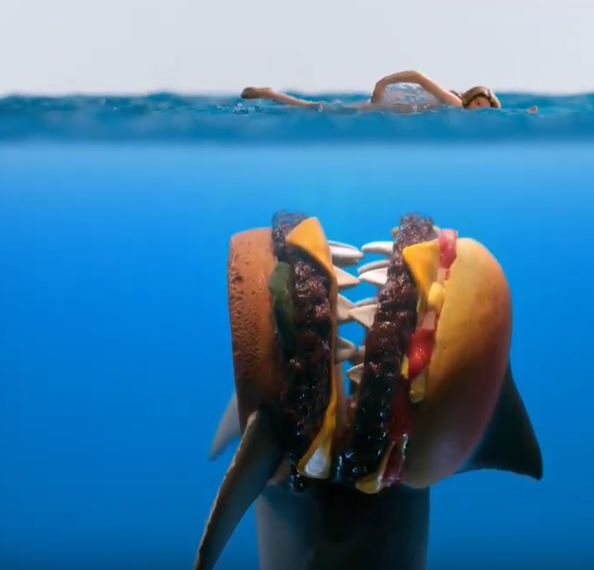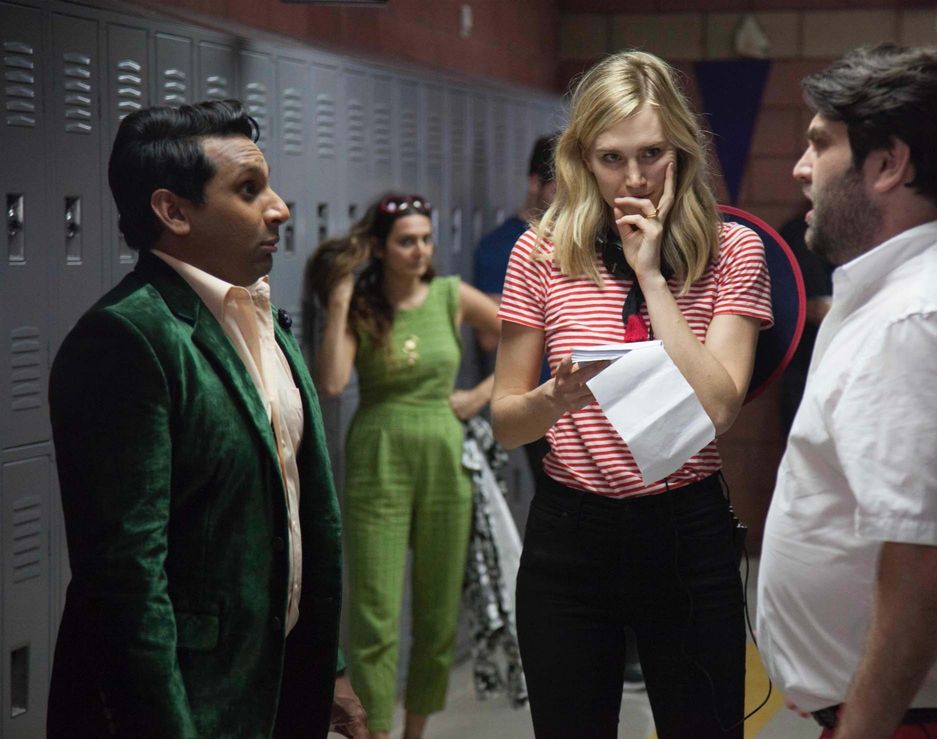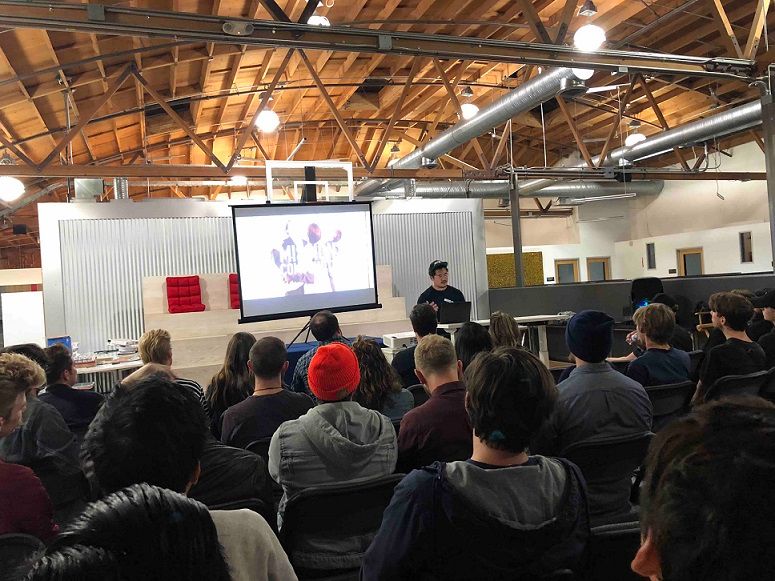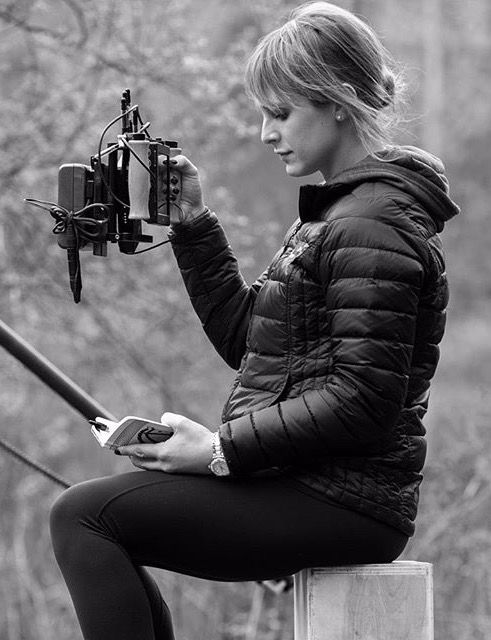Walking into Stoopid Buddy Studios feels like going down a rabbit hole and landing in a mysterious wooden mansion straight out of a whodunit film, with a joke lurking around every corner. It’s the kind of place where a trap door or a revolving wall would not be out of place. The walls were decked with figurines and novelty items, and visitors are greeted by the Robot Chicken. Of course, the best part about the studio is that the people who work there are just as friendly and good-humored as you would expect.
We sat down with producers Lauren Siller and Whitney Loveall. Lauren started out in the finance side of the industry, with a dream of going down the live action comedy route. Whitney started out as a receptionist for the studio, with a dream of becoming an actress. Needless to say, the “geeky,” close-knit work culture and collaborative nature of stop motion animation were magnetic enough to keep both women at Stoopid Buddy. It must be hard to leave a company where forming “clubs” with your co-workers is a regular thing (the chess nights and beer nights are just a few of the off-hours bonding events that an employee can take part in).
Here, Lauren and Whitney will walk you through the process of stop motion animation and talk about what it’s like to be a producer in the animation space. Let’s just say we might be a little jealous of all the fun they’re having.
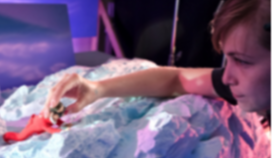

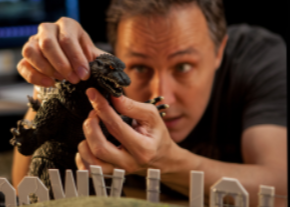
Bringing the Chicken to Life: The Stop Motion Production Process
As producers, what do you take into consideration when discussing the budget of a stop motion animation?
Lauren Siller: It's tricky. Sometimes people will come in and be like, "How much is it to do something like that?" We'll give a number and they're like, "Whoa, okay." But there's always a way to make things work. We can cater that look to whatever kind of budget you can bring us. It's difficult sometimes, because people don’t want to hear, "Oh, if you have that much, you might have to lose this crazy element you want of it."
Whitney Loveall: I think the thing that's important to note is that, as opposed to something that's 2D especially and perhaps even 3D, stop motion is a little bit more expensive because we do everything in house, from beginning all the way to the end. We have post here. Basically, we don't ship anything out to get done. I think a lot of 2D animation is shipped overseas where people get savings and tax credits for going abroad. I think the other thing to remember that's different than live action is that we're shooting for so long. That being said, every animation studio is different whether it’s stop-motion or other forms of animation. Studios come in all shapes and sizes, and each one has its own unique business model.
How are crews different in stop motion?
Whitney Loveall: In other areas of animation, you're working with animators abroad often. So the director and/or producer have to create a “rulebook” that encompasses all of the creative details of the project for the person that's going to be interpreting the story on the other side of the globe. In stop-motion, since it is animated in-house, the director directly talks to the animators and support staff. Here at the studio, we can just walk down the hall and say, "Hey, let's talk this through."
We also own all our own gear. We can't rent it, because it'd be so expensive to rent for a year. Because you're working in-house and because you have the same team taking a project from script and animatic all the way through post, there's not a ton of miscommunication in the hand-off. I think the biggest challenge is that everybody has to wear many hats. For example, Lauren may not necessarily get a PA, a coordinator, and a PM to help her for shorter projects.
Think of a stop-motion crew as similar to a live-action crew, but smaller. We need a camera team (DP, Gaffer, Grip), and our Animators are like our Actors. We also have an Art Department that’s responsible for the sets and props, and a Puppet Department that’s responsible for the puppet and costume fabrication.
Lauren Siller: I like it. It's been basically like a boot camp because I am on the floor more. I'm around mini sound stages, which are around 10’x10x’, separated by curtains. I'm learning a ton because I have to be A, B, and C person to figure issues out. Everyone's just trying to wear a lot of hats to get the best end result.
"Stop motion takes such a long time. Our goal is 10 seconds per person per day, which is a big goal. We've hardly ever achieved it."

What is an “animatic” and why is it so important to the production process?
Lauren Siller: The animatic is the QuickTime of the episode in storyboards. We'll break it down by shot and go through a process called “storyboard conforming.”
Whitney Loveall: It’s the animation bible. We utilize it to schedule everything. We know what set is going to go where and when we're going. In live action, you have a script breakdown. You take your script and say, "Okay, we're going to do scenes four and five." It's basically that. "We'll do shots six through 10 on this day, and it happens in this location. It has these puppets in it."
It's this more granular way of looking at everything overall. We use the animatic on our sound stages, and we refer to it so we can figure out continuity and what's happening in the scene and that kind of stuff.
How do you decide when to shoot certain scenes?
Lauren Siller: We don't have to shoot things in order. We shoot things on, you know, if there's a set that's going to be multiple times on that set, we'll get all those scenes out, just how you do a live action shoot. The same with our actor availability is our puppet availability. We think about: How many puppets do we have of this one character? Can they be on multiple sets at the same time, or do we need to schedule them?
The number of puppets really varies depending on the production and scripts. In general, the larger the production, the more puppets you need. When the stage schedule comes together, the puppet department works together with the production department to determine how many stages a puppet will have to play on. We might also create multiples of a puppet because it appears in different outfits—each outfit is a new puppet.
Whitney Loveall: We also ask: How many locations do we need to make?
Does the entire crew watch the animators as they move the figurines?
Whitney Loveall: No. Essentially we get everything set up. We load in a set. We light it. We throw the puppets in there. The director will direct an animator and tell him what he's looking for in one shot; the animator is kind of like the actor. Then we close the curtains on the animator, and it’s just up to them to create the scene.
What do you do to help animators nail the performances in the script?
Whitney Loveall: In stop motion animation, we typically use a 2D animation pipeline for the most part. After we get a script, we will record it in the recording booth, which again we do in-house, which is really convenient. Then we storyboard it, and then we cut together an animatic using the storyboards and the recordings.
Lauren Siller: It really helps the animators to animate to the actual VO, or the actor, whoever is the voice of this character. I think that helps the performance a lot.

What's the typical timeline of the production?
Lauren Siller: For shorter projects, something like a quick test or a commercial that is a minute to two minutes, we can finish in three months. We've had shorter deadlines, too.
It depends on the style. Like, if it's a more stylized and cinematic project, sometimes we can get four to five seconds a day done per animator. For a small project, there could be just one animator. For a larger series, we could have up to 16, or more!
Whitney Loveall: A series like Robot Chicken, from reading the scripts to wrapping the end of the last episode, is done in a little over a year. We usually shoot multiple episodes at the same time. It's usually sixty or so weeks. Stop motion takes such a long time. Our goal is 10 seconds per person per day, which is a big goal. We've hardly ever achieved it.
What's the shortest turnaround you’ve ever had?
Whitney Loveall: Our spots producer currently has to shoot something in about three days.
Lauren Siller: Yeah. She has to prep it in two weeks.
Whitney Loveall: Then the shoot is three or four days.
What cameras and software do your crews use?
Whitney Loveall: Typically, we use DSLR cameras and just plain Nikons, Canons, whatever. The software that we use is proprietary stop motion software that was built for stop motion photography. It's called Dragonframe. I would imagine most studios that do stop motion use Dragonframe. It uses DMX to communicate with the camera. DMX is a type of connection that is commonly used to control lighting and effects – most prevalently in stage production. It loads the live view in the computer. That's how they like to do all the settings, generally. Our editors assemble using sequences of JPEGs. It's just animation, basically frame by frame.
"We always have this 'figure it out' mentality where we'll take any meeting, any call, and figure out if it's a good fit for the studio and ask, 'How can we get this across to finish line?'"
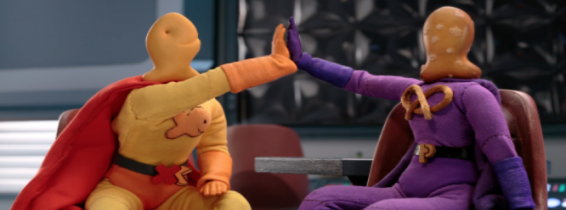
Preparing Yourself to Produce a Stop Motion Production
What are skills that are important for a producer in stop motion to have?
Lauren Siller: We are constantly, as a producer, putting people in check, but I think that's what producers do in general on anything. We’ll be like, "Okay, we have this much time, this much money. Here's what we can do and what we can't do." It's finding those creative solutions for getting a show-runner what they want, but then also fitting in the scope of what we've been given.
Being adept to change and being flexible is important too. I work on projects that are short. My projects usually are three or four months, and then I move on to the next one. What works for this first project probably won't work for that next one, so you have to kind of be ready for anything, and just be ready, go back to the basics and be like, "Okay. How do we figure out this next challenge?"
Whitney Loveall: I think the thing that's challenging about being a producer in stop motion versus other formats or mediums, although they all have their challenges, is there's not quite as much of a rule book established as there are in other mediums. People have been shooting live action film for a hundred years. They've been doing 2D animation for almost as long too, so it's something that's been around and there's been a massive machine created around those pipelines. Whereas, we're the largest stop motion studio that does TV. It's been about 15 years. That makes working at Robot Chicken a little easier, but still there's always just things thrown at you that there's not really a handbook for.
Stoopid Buddy prides ourselves on making every production unique. Because of that, every project comes with its own unique challenges, and we sometimes don’t know what they are until we get there! In stop-motion, there's often no rulebook, and we’re creating the guidelines for how to work as we go. Each day presents new hurdles that we have to overcome, which is why we have a great crew to face our challenges together!
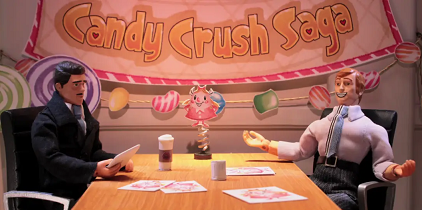
"I found holes in the studio and said things like, 'I think I could help in this area. I want to work in development.' I feel like I just had to figure out a way to be my own advocate.
— Lauren Siller
Do you have any advice for someone who's working their way up as you did in your careers?
Whitney Loveall: I think mentorship is very important. I had a pretty great mentor early on. The supervising producer took me under her wing and she really is the reason why I was able to move into a production role from being the receptionist. Your successes are always 50% your own credit and doing your own things, but also just having a mentor, a guide, to bring you up is invaluable.
There's a mentorship program through Women In Animation that I think is super helpful. I'm a mentor for it and it's really a good opportunity to have greener people partner with more experienced people in the industry.
Lauren Siller: I agree. I found holes in the studio and said things like, "I think I could help in this area. I wanted to work in development." I started being like, "Well, let me read that. I'd love to read this. I'd love to give coverage on this." Just finding ways I could help and make my voice heard. Then from that, they hired a head of development, and I just kept being like, "Well, she needs a coordinator." Then I was like, "Oh, well, then now I've had experience there. I feel like I can take it to the next level and we need a manager here." I feel like I just had to figure out a way to be my own advocate. I would come up with my own job description and [ask my supervisor], "How's this sound?"
Whitney Loveall: Yeah. I think that being in a small company was helpful [for Lauren] because she had the ability to do something like that, but I also think a lot of times it can be really scary. I think that's the hardest thing to stomach is taking that leap of faith and being like, "You know what? What's the worst thing that could happen? I'm going to put myself out there and hopefully be rewarded." It doesn't always go well.
Lauren Siller: It doesn't. But I consult with the strong women in my life, like my friends and coworkers, who help lift me up. I have those days of, "I don't know if I'm the best person to do this." And then they’re like, "No, you got this.” I think what’s important—finding people that can lift you up.
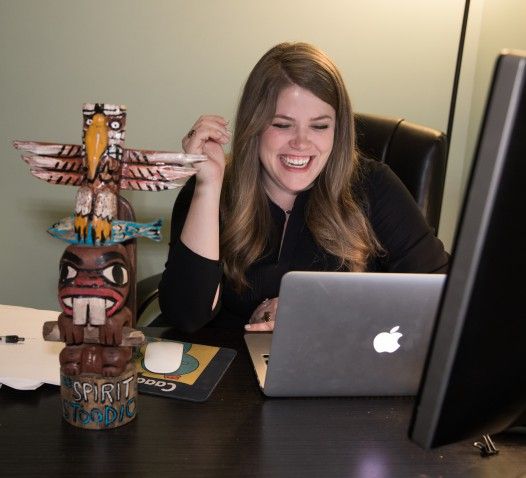
Lauren Siller
(insert bio here)
Whitney Loveall
(insert bio here)
